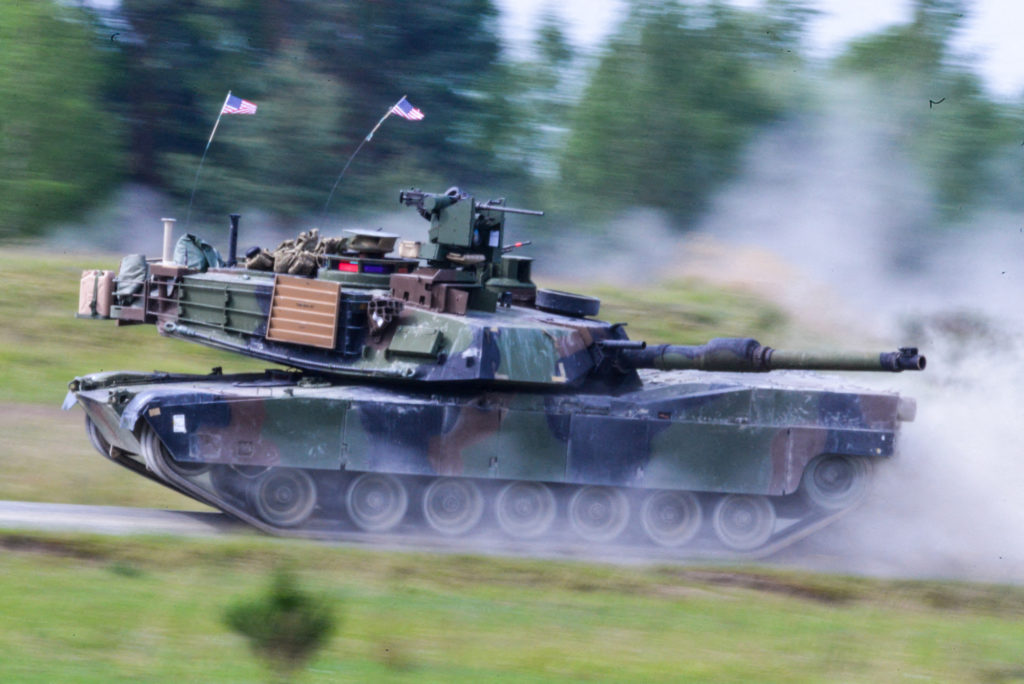NYT: Russians destroyed 5 of 31 U.S. Abrams tanks in Ukraine in two months
According to The New York Times, over the past two months, Russian armed forces have taken out five U.S. M1 Abrams tanks out of 31 that were shipped to Ukraine last fall by the United States.


As reported by the New York Times, Russian armed forces have managed to destroy five out of 31 US Abrams tanks in Ukraine within two months. These are the tanks that the Pentagon sent to Ukraine last fall, a senior US official said.
At least another three have been moderately damaged since the tanks were sent to front lines early this year, said Col. Markus Reisner, an Austrian military trainer who closely follows how weapons are being used — and lost — in the war in Ukraine.
That is a sliver of the 796 of Ukraine’s main battle tanks that have been destroyed, captured or abandoned since the war began in February 2022, according to Oryx, a military analysis site that counts losses based on visual evidence. A vast majority of those are Soviet-era, Russian or Ukrainian-made tanks; only about 140 of those taken out in battle were given to Ukraine by NATO states. And Russia has so far lost more than 2,900 tanks, the Oryx data show although Ukraine claims that the number exceeds 7,000.
German Leopard tanks have also been targeted in Ukraine, with at least 30 having been destroyed, Oryx says. But the Abrams is ”widely viewed as one of the world’s mightiest,” according to the publication.
The war is ”reshaping the very nature of modern warfare”
That it is being more easily taken out by exploding drones than some officials and experts had initially assumed shows “yet another way the conflict in Ukraine is reshaping the very nature of modern warfare,” said Can Kasapoglu, a defense analyst at the Hudson Institute in Washington.
The current war is transforming the way warfare is conducted in more ways than one. As NYT writes, the entire concept of how tanks are used on the battlefield is being tested by the new reality of warfare as exemplified by the fight between Russia and Ukraine.
“The drone fight in Ukraine, which is transforming modern warfare, has begun to deal a deadly blow to one of the most potent symbols of American military power – the tank – and threatens to rewrite how it will be used in future conflicts,” the publication writes.
The influence of drones on the battlefield
It notes that despite their power, tanks are not impenetrable, and they are most vulnerable where their heavy armor is thinnest: on top, the rear engine block and the space between the hull and turret. For years, tanks have been a prime target for mines, improvised explosive devices, rocket-propelled grenades and anti-tank guided missiles.
“The drones now being used against tanks in Ukraine are even more precise. Known as first-person view, or FPV, drones, they are equipped with a camera that transmits real-time images back to their controller, who can direct them to target tanks at their most vulnerable spots,” the publication said.
Col. Reisner said that on several occasions UAVs were used to “finish off” tanks that had already been damaged by mines or anti-tank missiles so that they could not be removed from the battlefield and repaired.
”Depending on their size and technological sophistication, the drones can cost as little as $500 — a paltry investment for taking out a $10 million Abrams tank. And some of them can carry munitions to boost the impact of their blast,” said Colonel Reisner.
These could be rocket-propelled grenades, he said, or self-forging warheads known as explosively formed penetrators, or EFPs, that were widely used in roadside bombs during the war in Iraq.
“Welcome to the 21st century — it’s unbelievable, actually,” the colonel said.
Electronic warfare and ”passive protection”
“At this stage, the most effective means used to defeat FPVs is electronic warfare and various types of passive protection,” including additional armor and other kinds of shielding on the tanks, said Michael Kofman, a senior fellow in the Russia and Eurasia program at the Carnegie Endowment for International Peace in Washington.
He said defeating FPVs required a “tailored approach on the battlefield” and that Ukrainian forces were becoming more adept at it.
Read more:
- Insider: Western companies supply rare parts for Russian tanks
- US charges trio for smuggling electronics to Russia’s military
- NYT: First Abrams tanks already in Ukraine, US officials say
- Denmark admits some Leopard 1s it donated to Ukraine have serious faults
- Sweden hands over its best tanks to Ukraine
- US aims to deliver Abrams tank to Ukraine in September – Politico
- Ukraine loses one out of its 14 Challenger tanks during offensive on southern front (VIDEO)
You could close this page. Or you could join our community and help us produce more materials like this.
We keep our reporting open and accessible to everyone because we believe in the power of free information. This is why our small, cost-effective team depends on the support of readers like you to bring deliver timely news, quality analysis, and on-the-ground reports about Russia's war against Ukraine and Ukraine's struggle to build a democratic society.
A little bit goes a long way: for as little as the cost of one cup of coffee a month, you can help build bridges between Ukraine and the rest of the world, plus become a co-creator and vote for topics we should cover next. Become a patron or see other ways to support.



